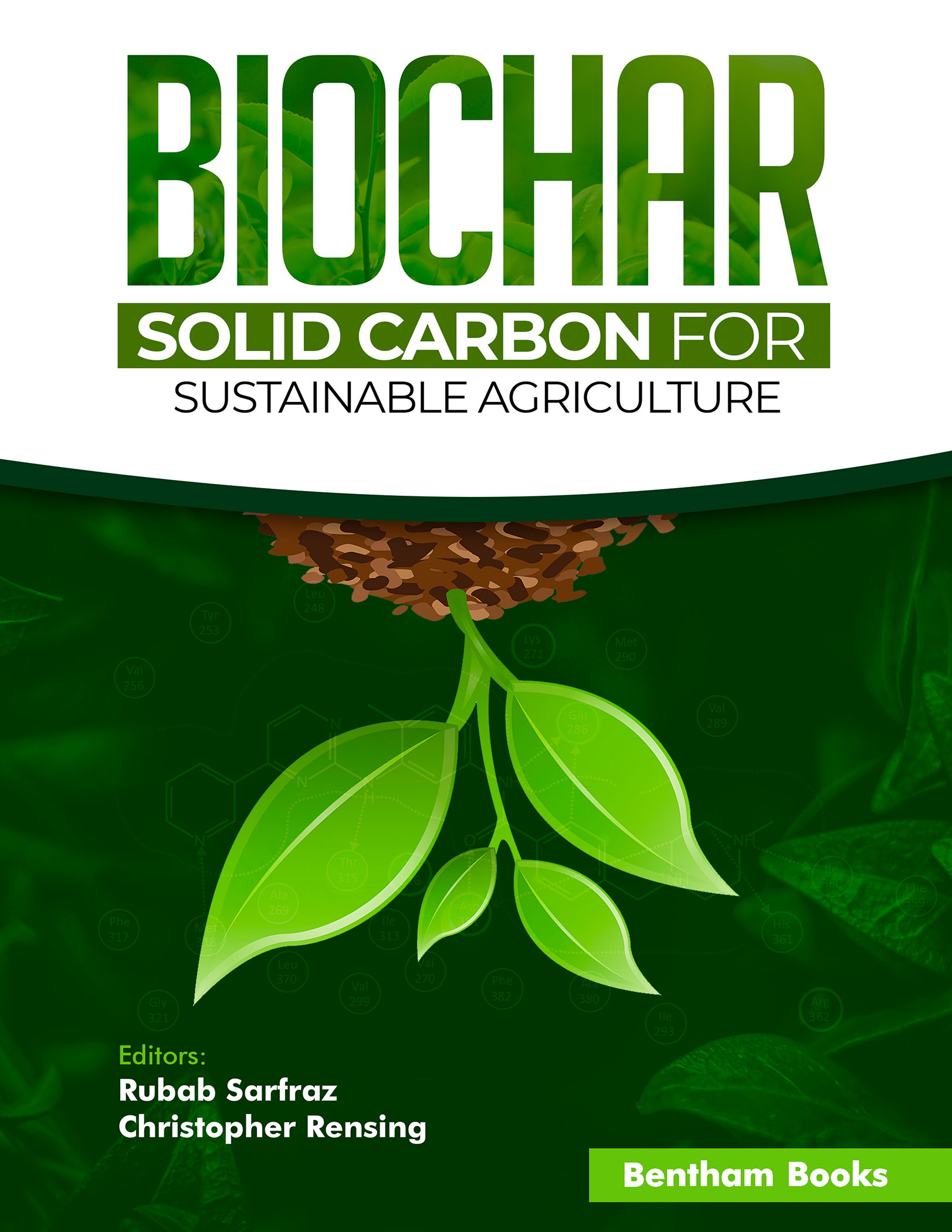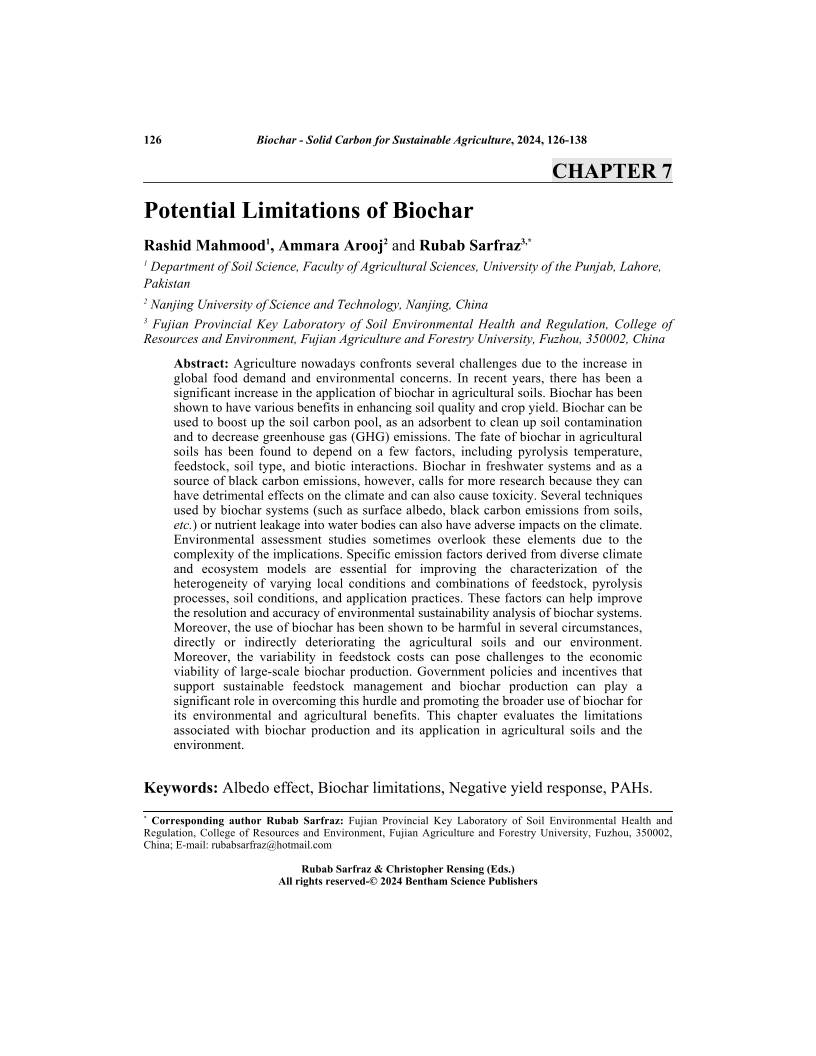Potential Limitations of Biochar

- Authors: Rashid Mahmood1, Ammara Arooj2, Rubab Sarfraz3
-
View Affiliations Hide AffiliationsAffiliations: 1 Department of Soil Science, Faculty of Agricultural Sciences, University of the Punjab, Lahore, Pakistan 2 Nanjing University of Science and Technology, Nanjing, China 3 Fujian Provincial Key Laboratory of Soil Environmental Health and Regulation, College of Resources and Environment, Fujian Agriculture and Forestry University, Fuzhou, 350002, China
- Source: Biochar - Solid Carbon for Sustainable Agriculture , pp 126-138
- Publication Date: September 2024
- Language: English
Potential Limitations of Biochar, Page 1 of 1
< Previous page | Next page > /docserver/preview/fulltext/9789815238068/chapter-7-1.gif
Agriculture nowadays confronts several challenges due to the increase in global food demand and environmental concerns. In recent years, there has been a significant increase in the application of biochar in agricultural soils. Biochar has been shown to have various benefits in enhancing soil quality and crop yield. Biochar can be used to boost up the soil carbon pool, as an adsorbent to clean up soil contamination and to decrease greenhouse gas (GHG) emissions. The fate of biochar in agricultural soils has been found to depend on a few factors, including pyrolysis temperature, feedstock, soil type, and biotic interactions. Biochar in freshwater systems and as a source of black carbon emissions, however, calls for more research because they can have detrimental effects on the climate and can also cause toxicity. Several techniques used by biochar systems (such as surface albedo, black carbon emissions from soils, etc.) or nutrient leakage into water bodies can also have adverse impacts on the climate. Environmental assessment studies sometimes overlook these elements due to the complexity of the implications. Specific emission factors derived from diverse climate and ecosystem models are essential for improving the characterization of the heterogeneity of varying local conditions and combinations of feedstock, pyrolysis processes, soil conditions, and application practices. These factors can help improve the resolution and accuracy of environmental sustainability analysis of biochar systems. Moreover, the use of biochar has been shown to be harmful in several circumstances, directly or indirectly deteriorating the agricultural soils and our environment. Moreover, the variability in feedstock costs can pose challenges to the economic viability of large-scale biochar production. Government policies and incentives that support sustainable feedstock management and biochar production can play a significant role in overcoming this hurdle and promoting the broader use of biochar for its environmental and agricultural benefits. This chapter evaluates the limitations associated with biochar production and its application in agricultural soils and the environment.
-
From This Site
/content/books/9789815238068.chapter-7dcterms_subject,pub_keyword-contentType:Journal105

